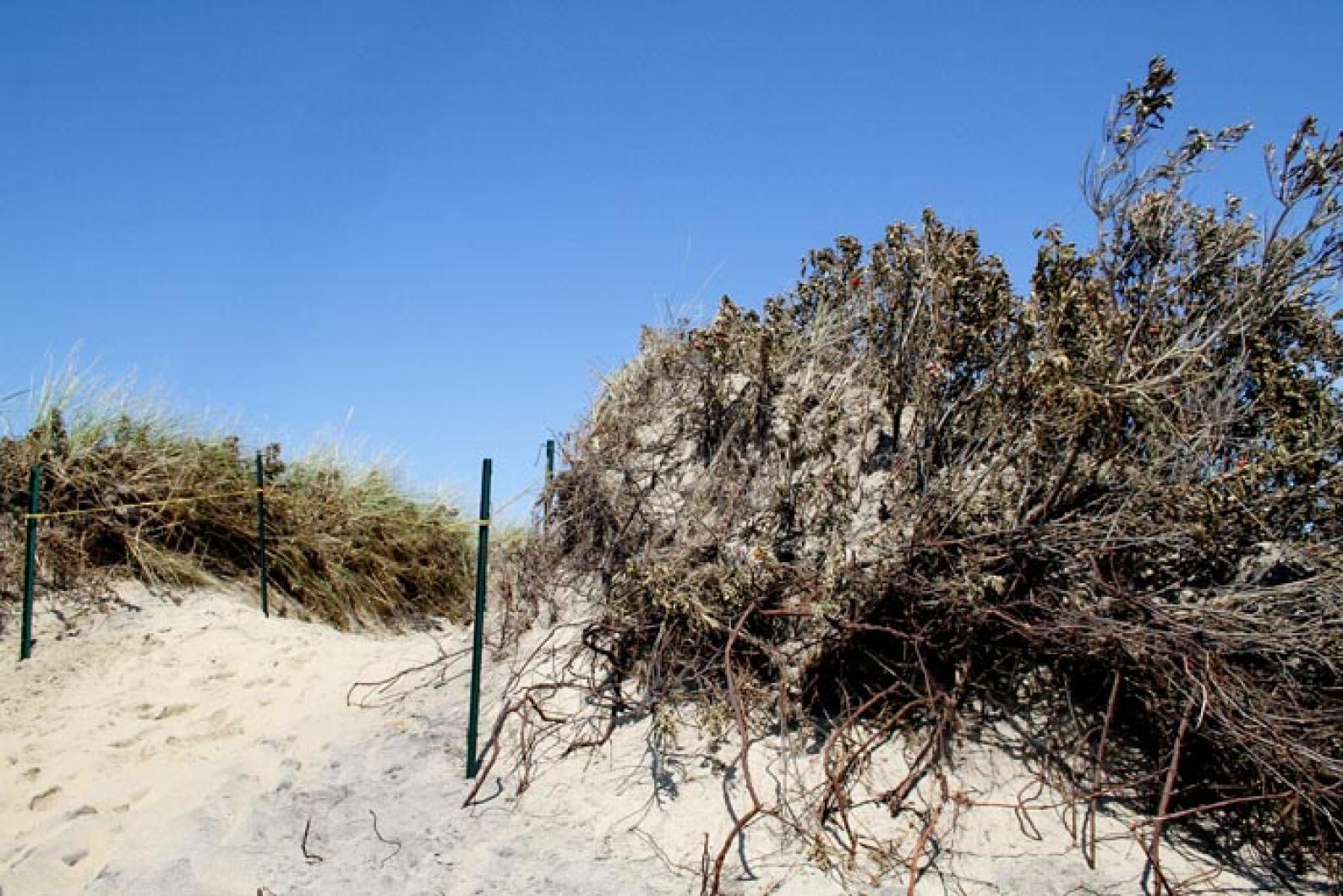The Chilmark Conservation Commission issued an emergency work certificate this week for two perilously-perched cottages on the cliffs of Stonewall Beach, fearing if they are not moved back from the edge they will fall into the ocean.
Natalie Conroy’s two small cottages on her property off State Road in Chilmark must be moved after tropical storm Irene stripped off 10 feet of cliff where the structures stand.
Both cottages are in danger of falling into the sea. The larger cottage has about a foot of cliff in front of the front door. The second cottage, called Half Shell, now sits on the very edge of the cliff — walking out the front door leads to a sharp drop down.
At an emergency conservation commission meeting on Tuesday Ms. Conroy said the need to move Half Shell is immediate and dire. The larger cottage will have to be moved eventually, and it was prudent to have the house ready to go in case another storm hit, she said.
“I’ve been there for 15 years and only lost [cliff area] in the last two,” she said. “This is just a temporary application to put them on steel beams. They have to be moved. There’s no question about it.”
Ms. Conroy lives in a larger house on the same property that is safely situated back from the edge of the cliff.
The work order will allow Half Shell to be lifted by a crane up and over the larger cottage and moved to a parking lot on the east side of the property, a temporary move until Ms. Conroy develops a permanent plan. She has 30 days to complete the work.
Steel shoring beams will be placed below the larger cottage and if necessary, the work order also allows for the cottage to be moved by crane back toward the road.
At a site visit Tuesday morning before the conservation commission took a vote, board members were openly shocked at the proximity of the cottages to the cliff. The decking on the larger cottage was uneven and the doorstep of Half Shell practically hung over the edge of the cliff. There were concerns about where Ms. Conroy would move the structures on the property, and at one point the suggestion was made that the house be condemned through an application to the state Department of Environmental Protection.
With steep cliffs on one side and only about 22 feet from the back of the larger cottage to the entrance road to the property, the configuration of the property limits where the two buildings can be moved. Behind the road is a salt marsh and protected wetland.
Ms. Conroy said because she owns the road, she can move the house as close to the road as possible with no concerns about setbacks. She added that this is a first for her.
“I never had to do any major restoration to that bank until two years ago and I’ve maintained it pretty much myself,” she said of a cloth barrier with grass plugs that once stabilized the cliff.
Commission member Richard Steves estimated the south-facing beaches in Chilmark erode five to six feet annually, if not more.
Ms. Conroy suggested one solution was to move Half Shell to a dry area behind the wetland and add a boardwalk to the road. But commission member Donald Poole questioned whether the dry area is really dry.
In the end the commission was quick to approve the work request unanimously, and an emotional Ms. Conroy thanked them.
The commission also issued an emergency work certificate to move a 55,000-pound boat that broke anchor in Nashaquitsa Pond during the tropical storm. The Ivy, owned by Richard Couch, was anchored at the town landing in the pond and washed ashore on the far side of the pond in Lovey’s Cove.
Haulers Dale McClure and John Packer were on site Tuesday morning to develop a plan to get the boat off the shoreline with the least amount of digging. The conservation commission was concerned digging would disrupt bay scallop beds, but Mr. McClure said he would use the town barge to put the boat on a sling and hoist it back into the water.
The boat was safely back in the harbor Wednesday morning.






Comments
Comment policy »